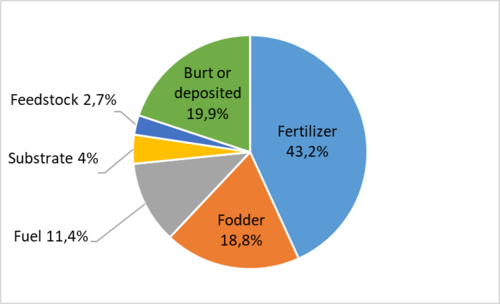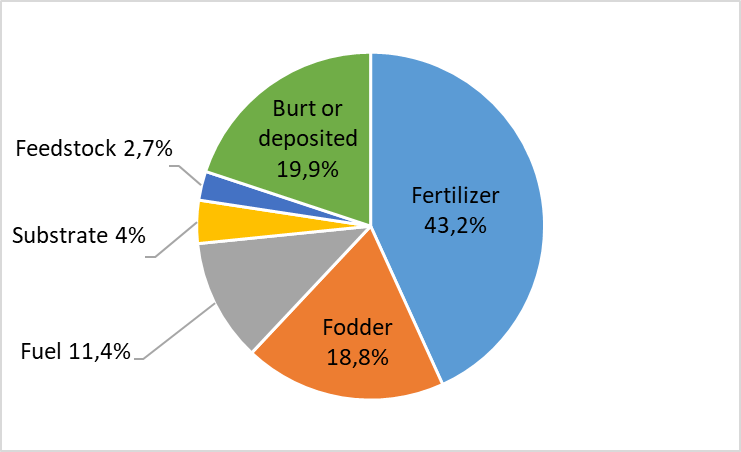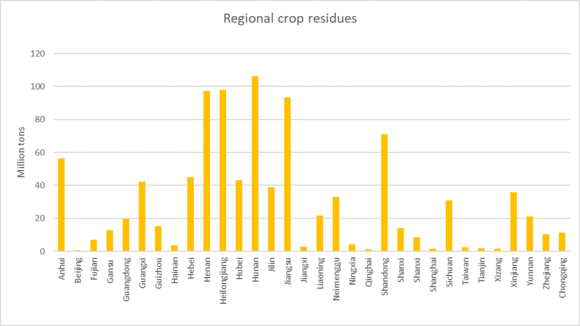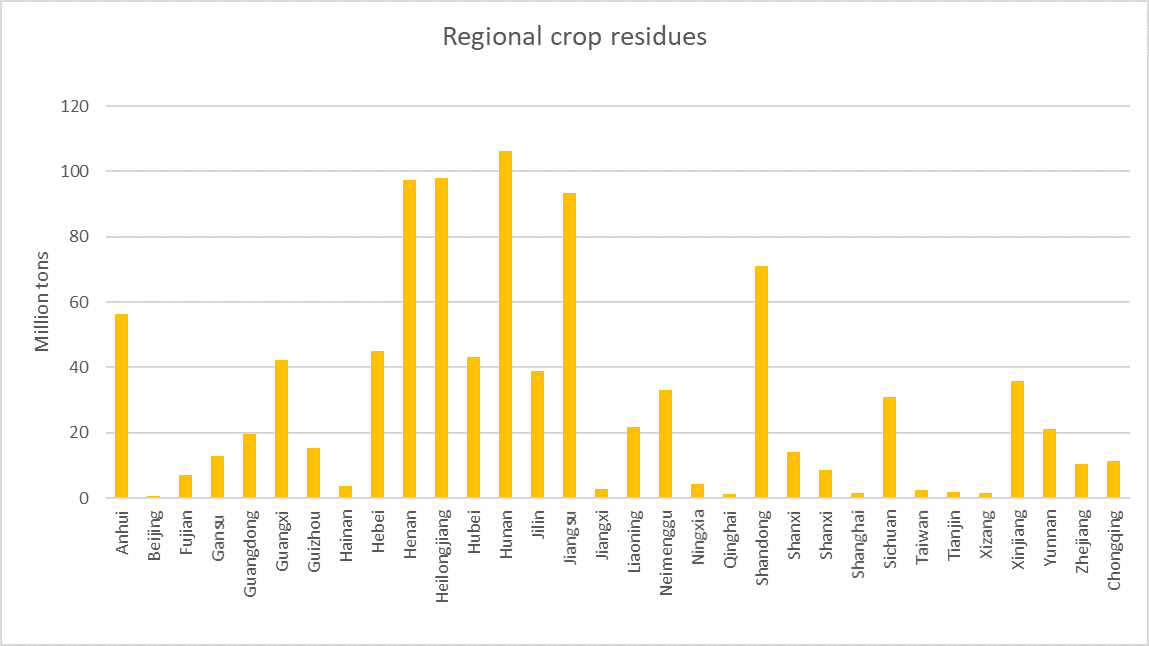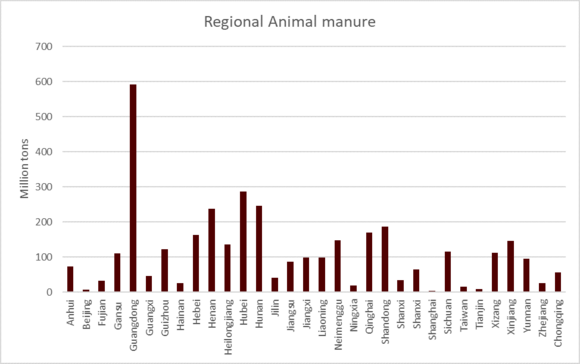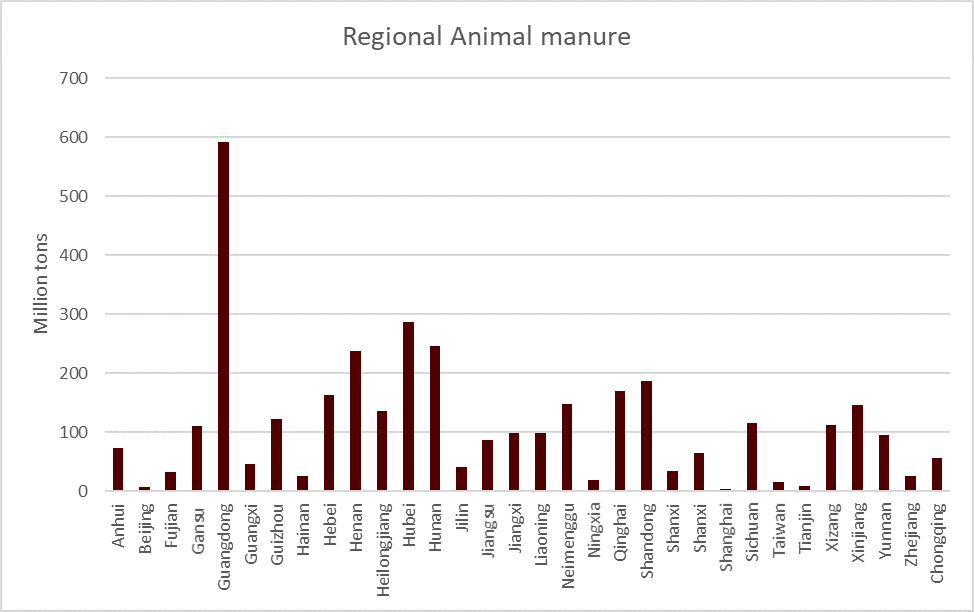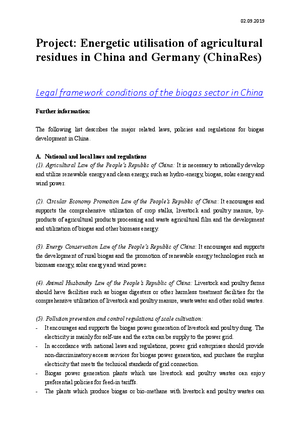Biogas and animal husbandry in China
As the biggest developing country and a big agricultural country in the world, China has one of the biggest potential markets of bioenergy. Especially these years, bioenergy plays an increasing role in the national energy strategy. In China, because of the huge population and the low arable land per capita, arable land is very valuable, and the food is the cardinal question. That is why the basic principle to develop biomass is "No fight with people for food and No fight with food for land". China advocates use waste, such as agricultural and forestry waste and industrial wastewater to produce bioenergy. It is not allowed to plant energy crops in large scale, therefore the use of agricultural residues plays a quite important role in the development of renewable energy. On December 21, 2016, Chinese President Xi Jinping chaired the 14th Meeting of the Central Leading Group on Finance and Economics. He proposed that biogas and biomethane should be the main treatment directions of livestock and poultry dung, and in rural areas, making use of rural energy and organic fertilizer. During the 13th Five-Year Plan period, China strives to basically solve the problem of waste disposal and resource utilization in large-scale livestock and poultry farms.
China has the biggest agricultural residues output quantity in the world, around four billion tons annually. Among that, there are 700 million tons of straw from crops. And with the development of modern agriculture, the total amount will increase by 5% to 10% per year. It is estimated that in 2020, the quantity of straw will reach 95 million tons/year.
Agricultural wastes in China mainly include crop stalks and livestock manure.
Crop straw: In 2015, the theoretical resources amounted to 1.04 billion tons and the utilization amount was 0.72 billion tons, and the comprehensive utilization ratio was 80%. 80.1% of crop residue utilized in China.
Livestock and poultry dung: currently there are about 3.8 billion tons, and more than 40% are not effectively utilized yet. Pig, cattle and chicken manure are the three main kinds of livestock and poultry. The annual output poultry of large-scale livestock farming is 19 million tons.
Regional distribution
China has a large area; and based on the data from the China Statistics Year Book/ Regional Statistics Year Book; the distribution of resources varies greatly among the different regions of China. For the crop residues, the provinces Hunan, Heilongjiang, Jiangsu and Anhui are far ahead of other regions. For animal manure, Guangdong province is far ahead of other provinces in China.
The raw materials used for biogas production mainly include crop straw, livestock and poultry excrements, agricultural product processing residues, vegetable residues, rural organic domestic waste and further. According to estimates, the total amount of waste resources available for biogas production is about 1.34 billion tons, and the biogas production potential is about 110 billion cubic meters.
Types of Wastes | Total Resources/100 million tons | Available resources/100 million tons | Potential of biogas production/100 million m3 |
Stroh | 10.2 | 1.36 | 400 |
Livestock and poultry manure | 19 | 10.4 | 620 |
Other organic wastes | 5.5 | 1.64 | 87 |
Total | 34.7 | 13.4 | 1107 |
Chinese legislative directives and policies on renewable energy and environment protection have three levels. The central government establishes the first two levels and the local government including the provincial, municipal and county governments, establish the third level of policy according to the local situation and under the direction from the central government. (Research Centre for Sustainable Development, 2006).
First-level policies include national laws and regulations, which indicates Chinese government’s standpoint on the global environment, general directions and guidance. Second-level policies will specify goals/objectives and development plans and focus on rural electrification, renewable energy-based generation technologies and fuel wood. These policies attempt to standardize the directions, focal points and objectives of renewable energy development from different viewpoints. Some departments propose concrete policies and regulations. Second-level policies have played a very important role in promoting renewable technologies in China. (Research Centre for Sustainable Development, 2006).
Combined with the local situation, natural resources, population, market and investment, the local government and also some central government offices promulgate the Third-level policies, which consist of practical and specific incentives and managerial guidelines. It provides crucial support to support the development of renewable energy in its early growth stages. Since the mid-1990s, many provinces and autonomous regions of China have adopted policies for developing renewable energy, including subsidies and tax reduction. The central government also issued several effective regulations.
Download more detailed information on Chinese laws and regulations in the biogas sector >>>
Global dairy cattle stocks showed a steady upward trend, while China's dairy cattle stocks showed a downward trend these years. In 2018, China's dairy cattle stock was 7.2 million, which decreased by 1.2 million from 2014. In 2018, China's dairy cattle stocks accounted for 5.08% of the world's dairy cattle stocks, which decreased 1.03 percentage points from 2014. Started from 2014, due to the impact of international low-cost raw milk, along with the high feed prices of corn and other dairy cattle feed, the cost of dairy farming in China has risen. In recent years, the number of domestic dairy cattle stocks and the production capacity of raw milk have declined significantly.
In 2018, the market output of China's dairy industry was about 26.871 million tons, which decreased by 2.479 million tons compared to 2017. In 2018, the import quantity of dairy products was about 2663,300 tons, the export quantity was 39,000 tons, and the domestic consumption volume of dairy products industry was about 29.4683 million tons.
China's dairy farming is mainly concentrated in Inner Mongolia, Heilongjiang, Hebei, Shandong, Henan, Shaanxi, Ningxia, Xinjiang, Liaoning, Shanxi and other 10 provinces. Among them, Inner Mongolia's dairy cattle stock has been in the first place in recent years, accounting for about 2.12 million head, accounting for more than 15.4% of the national total, followed by Xinjiang and Hebei, accounting for about 1.85 million head and 1.81 million head, accounting for 13.5% and 13.2% of the national total. Beijing is one of the traditional predominant area of dairy farming in China, which the scale of dairy farming and manure treatment is in the leading position in China.
Mr. Han Changfu, Minister of Agriculture said that, livestock and poultry manure is resource rather than pollution. The output value of animal husbandry in China is 2.98 trillion yuan, accounting for 27.8% of the total agricultural output. The rapid development of animal husbandry has met the growing demand for livestock products in the whole society. At the same time, a large number of livestock and poultry wastes have been produced, and the problem of livestock and poultry manure has become increasingly prominent.
China's dairy farming, manure disposal and treatment, farm size and comprehensive situation vary greatly among provinces and regions. Generally, there are also some common characteristics.
Started from 1985, the scale of poultry and livestock farming in China has increased substantially, and the degree of intensification, scale and mechanization has been continuously increasing. While poultry and livestock farming improve the lives of urban and rural residents, the environmental pollution problems caused by poultry and livestock farming have also become increasingly serious. At present, the problem of livestock manure pollution has become the main source of rural pollution in China, and the problem of livestock manure pollution is the main factor restricting the sustainable and healthy development of large-scale livestock farming. China's manure treatment started relatively late, and it is still at the stage of development attempt. The treatment methods mostly draw lessons from foreign technologies and experiences, mainly including direct returning to farmland and biogas production. But the treatment system, facilities and technologies are not good enough which is easy to cause secondary pollution to the environment. In general, the main processes and methods of fecal disposal are as follows:
► Collection of cow dung
► Transportation of cow dung
► Treatment of dairy cow excrement
- Natural composting
- Fermentation of wild compost
- Fermentation of greenhouse compost
- Processing Organic Fertilizer from Cattle Manure
There are three primary categories of biogas projects in China: rural household-, agricultural waste-, and industrial organic waste-based biogas projects. By the end of 2014, there were 35,533,000 rural households in China using biogas, accounting for 30% of the suitable households. In 2014, the total annual production of biogas in China reached 15.5 billion m3 with the following shares:
- 13.24 billion m3 produced in rural areas, which is an annual household production of 373 m3
- 2 billion m3 produced in 103,036waste disposal plants
- 0.25 billion m3 produced in 320 industrial waste disposal plants
Additionally, some small biogas projects were scattered among schools and hospitals. Total biogas production from agricultural projects increased from 40 million m3 in 2001 to 2 billion m3 in 2014. The proportion of agricultural biogas projects in total biogas production in China has increased from 1.11% in 2001 to 12.93% in 2014.
China pays equal attention to garbage power generation and straw power generation, and biogas development has entered the best period in history. Judging from the change of installed capacity of biomass power generation, the cumulative installed capacity of biomass power generation in China was 16.91 GW in the first three quarters of 2018, and the new installed capacity was 2.15 GW. Since 2012, the installed scale of biomass power generation in China has increased by more than four times and developed rapidly.
Installation Scale of Biomass Power Generation in China
Year | New installed capacity (GW) | Cumulative installed capacity (GW) |
2012 | 0.5 | 4.15 |
2013 | 4.35 | 8.5 |
2014 | 0.9 | 9.4 |
2015 | 0.91 | 10.31 |
2016 | 1.83 | 12.14 |
2017 | 2.74 | 14.76 |
The 1st three quarters of 2018 | 2.15 | 16.91 |
In China's biomass power generation projects, waste incineration power generation accounts for the largest proportion, about 49%; direct-fired power generation accounts for about 47%; and biogas power generation projects account for the least type, accounting for less than 4%.
In 2017, the installed scale of straw power generation reached 7.08 MW and the the installed garbage power generation 7.25 MW, which is an increase by 10.1% and 33.5% respectively. According to the latest data, in the first three quarters of 2018, the installed capacity of straw power generation in China reached 8.11 million kilowatts, while the installed capacity of garbage power generation has risen to 8.3 million kilowatts, maintaining a rapid growth rate.
Although the scale of biogas power generation is small, the development of biogas in China has entered the best period ever. Previously, the National Development and Reform Commission issued a "medium and long-term renewable energy development plan" clearly pointed out that China's biogas production scale would reach 44 billion cubic meters in 2020, including large and medium-sized biogas production scale reaching 14 billion cubic meters.
In addition, the National Development and Reform Commission and the Ministry of Agriculture jointly issued the Thirteenth Five-Year Plan for the Development of Rural Biogas. According to the Plan, the total investment of rural biogas projects will reach 50 billion yuan during the 13th Five-Year Plan period, including 18.12 billion yuan for large-scale biogas projects. The proportion is the highest, reaching 3.624%. The large-scale biogas project is 13.361 billion yuan, the medium-sized biogas project is 9.1 billion yuan, the small-scale biogas project is 5.9 billion yuan, the household biogas is 3.33 billion yuan, and the biogas science and technology innovation platform is 189 million yuan. Strong support from national policies will promote the development of biogas power generation.
